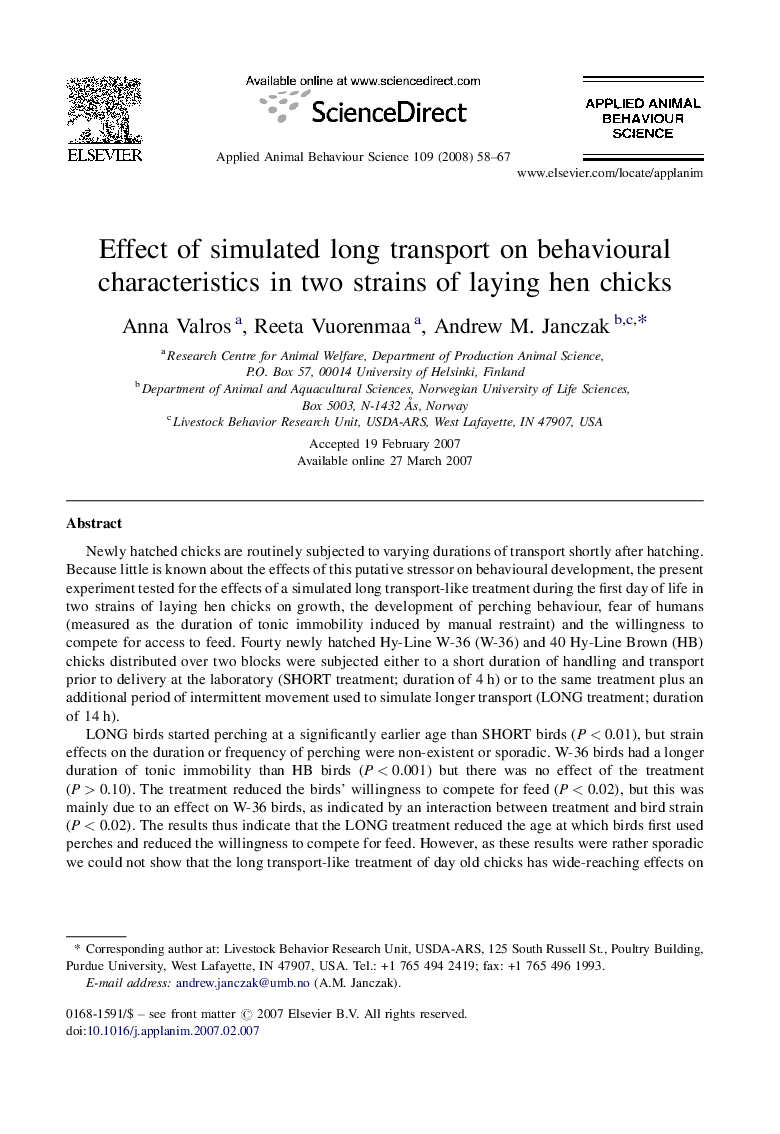| Article ID | Journal | Published Year | Pages | File Type |
|---|---|---|---|---|
| 6379897 | Applied Animal Behaviour Science | 2008 | 10 Pages |
Abstract
LONG birds started perching at a significantly earlier age than SHORT birds (PÂ <Â 0.01), but strain effects on the duration or frequency of perching were non-existent or sporadic. W-36 birds had a longer duration of tonic immobility than HB birds (PÂ <Â 0.001) but there was no effect of the treatment (PÂ >Â 0.10). The treatment reduced the birds' willingness to compete for feed (PÂ <Â 0.02), but this was mainly due to an effect on W-36 birds, as indicated by an interaction between treatment and bird strain (PÂ <Â 0.02). The results thus indicate that the LONG treatment reduced the age at which birds first used perches and reduced the willingness to compete for feed. However, as these results were rather sporadic we could not show that the long transport-like treatment of day old chicks has wide-reaching effects on behavioural development. Further studies are needed to assess the long-term effect of transport duration on chicks and laying hens.
Related Topics
Life Sciences
Agricultural and Biological Sciences
Animal Science and Zoology
Authors
Anna Valros, Reeta Vuorenmaa, Andrew M. Janczak,
